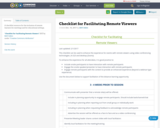
A checklist resource for the inclusion of remote learners for meetings and for educational settings.
- Subject:
- Education
- Material Type:
- Teaching/Learning Strategy
- Date Added:
- 12/18/2017

A checklist resource for the inclusion of remote learners for meetings and for educational settings.
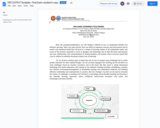
CPE/DPE
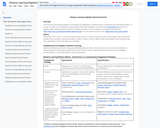
Overview:
This document will support teachers in the design and adaptation of weekly lessons for distance learning implementation. It is open for public use. The guidance and weekly assignment templates can be used with CTEOnline.org lessons and projects and/or customized for a teacher’s existing curriculum. For CDE guidance on distance learning visit: https://www.cde.ca.gov/ls/he/hn/distancelearning.asp For CTE specific resources vist: https://www.cde.ca.gov/ci/ct/dl/
Advice:
Remember, “less is more”. Pick your 3 favorite tech tools max. Once you pick your tools, stick to them. Pick tools that are familiar to your students, whenever possible. Create or locate a 'how to' video to share with students who may need help. Also remind them of the help features of software.
Variability and Accessibility in Distance Learning:
Options for delivery and format. Always provide alternatives to video and online resources so content is available for students with and without technology access. Work with your district to identify specific distance learning strategies, accommodations, and modifications for Special Education.
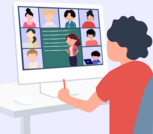
This resource includes links to three editable Google slide shows that support the facilitation of two lessons on engagement in a distance learning environment: Distance Learning: Overall EngagementBreakout Room CollaborationSuitable for grades 6-12 as is, and for younger students with some modification.
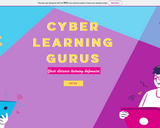
The website is collectively made and authored by students from the University of the Philippines Open University under the program of Multimedia Studies.
The educational content on the website is divided into the following modules:
Module 1: Introduction
Module 2: Study Skills
Module 3: Finding and Sharing Information
Module 4: Organizing Files Digitally
Module 5: Time Management
Module 6: Making the Most of Online Classes
Module 7: Conclusion

EDUFLEX MODELA Proposed Schema of 21st Century Skills Flexible Learning Approach
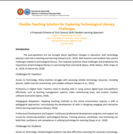
The post-pandemic era has led to changes in education, with technology playing a vital role. Teachers and students face challenges related to technological literacy. To address these challenges, investing in infrastructure, providing professional development, and developing digital skills in students are important. Blended learning, incorporating face-to-face and online activities, is a potential solution. Theories like constructivism and Bloom's Taxonomy can guide teaching. Flexible approaches such as project-based learning and the flipped classroom, along with technology tools and resources, support technology literacy. Implementing these approaches empowers students with skills for the digital age.
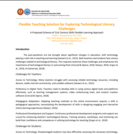
The post-pandemic era presents significant challenges in education, especially in technology integration. The Flexible Teaching Solution for Exploring Technological Literacy Challenges addresses these issues by emphasizing the importance of technological literacy and proposing effective solutions. Teachers face challenges such as limited technology access and proficiency, pedagogical adaptation, and the need for professional development. Students encounter difficulties with technology access, digital skills, self-regulation, motivation, equity, and inclusion. To overcome these challenges, investments in infrastructure, professional development, and inclusive policies are crucial. Blended learning, integrating face-to-face and online instruction, is a potential solution. Implementing the flexible teaching approach involves using various technology tools and platforms, open educational resources, and digital assessments. This dynamic learning environment fosters 21st-century skills in students.
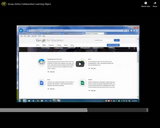
Video about group online collaboration in Social Media; Google Docs; Video Conferencing; and Virtual Worlds
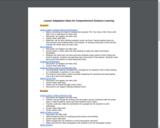
This resource provides lesson adaptation ideas for Comprehensive Distance Learning within the SB 13 Tribal History/Shared History 4th, 8th, and 10th Grade Lessons.
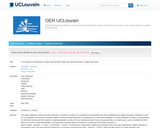
This paper addresses online and open education. It presents a simple, yet comprehensive framework that can be adopted by any higher education institution in seek of: (1) clarification of terms and concepts related to online and open education, (2) awareness of issues and challenges to set up strategies for online or open learning, (3) informed choices and their impacts on operationalization actions, from an institutional point of view, (4) perspectives on crucial issues, such as mobility, that HEI faces in a context of internationalization, (5) awareness of policymakers and teachers on what open and online education is.
Paper Citation : Jacqmot, C.; Docq, F. and Deville, Y. (2020). A Framework to Understand, Analyse and Describe Online and Open Education in Higher Education.In Proceedings of the 12th International Conference on Computer Supported Education - Volume 1: CSEDU, ISBN 978-989-758-417-6, pages 458-465. DOI: 10.5220/0009470704580465

Relevez le Défi-Distance une case à la fois!
Un parcours qui traverses des questions et des thématiques permettant à un enseignant de proposer à ses étudiants des activités d’apprentissage à distance tout en observant l’alignement pédagogique et dépassant le défi technologique.
Cette infographie interactive propose des conseils pratiques et des repères pédagogiques en réponse aux questions des enseignant·es pour enseigner à distance.

The Peralta CC District developed an Equity Rubric instrument designed to help online instructors make the learning experience more equitable for all students. The rubric’s criteria is roughly aligned with the CVC-OEI Course Design Rubric. It includes strategies to increase students’ access to technology and different types of support (both academic and non-academic); and make explicit the instructor’s commitment to inclusion by addressing some design principles through an equity lens.
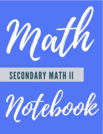
This is the Secondary Math II student math notebook that accompanies the Desmos collections that have been created for this online math course.

This is a Proposed Schema for 21st Century Skills Flexible Learning ApproachTECHFLIPS Model: Empowering 21st Century Learners on Unleashing Creativity through Flipped Learning was created with the agenda to bring light in using a Flipped Classroom Approach in delivering lessons in the New Normal. This model considers the goal of attaining the learning outcomes presented and overall student learning achievement.

The "Transforming Assessment" model utilizes technology and flexible teaching strategies to foster collaboration, a crucial 21st-century skill. By incorporating theories such as Social Constructivism and implementing self-paced learning, technology tools/apps/sites, and Open Educational Resources (OERs), the model promotes personalized learning experiences and equips students with the skills needed for effective collaboration.

The Student-Centered Learning Initiative in Pennsylvania aims to standardize key terms and instructional frameworks related to student-centered learning concepts. Led by educational leaders from Pennsylvania Intermediate Units and school districts, with support from Penn State University, the initiative promotes interoperability among professional learning facilitators and designers. Key concepts include student-centered learning, online and distance learning, blended learning, and personalized learning, all with the goal of improving educational outcomes by empowering students and creating equitable, meaningful learning experiences tailored to individual needs.
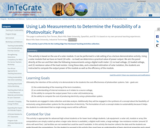
Using Lab Measurements to determine the power output of a solar module and the economic feasibility of photovoltaic panels
(Note: this resource was added to OER Commons as part of a batch upload of over 2,200 records. If you notice an issue with the quality of the metadata, please let us know by using the 'report' button and we will flag it for consideration.)

ESL lesson plan for use in orientation to videconferencing platforms such as Zoom and Google Meet. Students practice using microphone mute/unmute and the chatbox to report about the poeple in their homes and read about their classmates' homes using the present progressive tense.

This document presents the results of the Erasmus+ "InterMedia Project" focused on the development of a WordPress-based learning platform. The document begins by discussing the outcomes of the desktop research conducted during the project, followed by an analysis performed throughout its duration. The criteria for the project team are also outlined.
The evaluation outcomes of various learning management systems (LMS) are then presented, covering Tutor LMS, Masteriyo, Lifter LMS, and LearnPress. A comparison table highlighting their features is provided for reference. The appendix section includes additional information the learning platform itself, and various technical aspects such as WordPress short codes, front-end and back-end development, PHP, HTML, CSS, and JavaScript.
The document concludes with details about the project partners, namely AJITER, EUPHORIANET, BRAINLOG, and EUROPÄISCHE BILDUNGSINITIATIVE EBI/EIE. The outcomes of the Erasmus+ "InterMedia Project" contribute to the understanding and implementation of a WordPress-based learning platform for educational purposes.